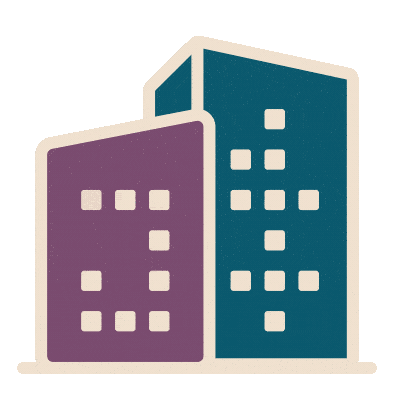Architect and WELL AP Jamie Stephens on how she "finds balance in a chaotic world"
Discover how Jamie Stephens uses her expertise as a WELL AP as an architect designing healthy buildings.
As an Architect at DAG Architects, Jamie Stephens uses WELL to advise clients and design healthy buildings. Her WELL AP credential has become an even more important tool, as the pandemic has emphasized the need to build spaces with people in mind.
1. What’s something about the WELL AP—or the WELL movement in general—that isn’t often discussed, but you think deserves more attention?
One of my favorite ways WELL compares to other healthy building standards is its focus on inhabitants’ and end users’ experience over more upstream metrics like water or electricity usage. Not only can we create beautiful, high performing buildings, but we are better equipped to ensure that companies will have fair workplace standards, that employees will have dedicated lunch breaks and time to decompress or manage stress, that workers aren’t confined to dark spaces with no views to the outside. We are changing the course of people’s lives for the better.

2. What’s something about the WELL AP program that you wish you’d known when you were first starting out?
I wish I had known sooner that working on a WELL project as a team member or lead WELL consultant qualifies you for SO MANY of your WELL-Specific continuing education hours. I was a bit stressed about finding enough available courses to renew my credential, but I was pleased to learn that my project experience counts for so much!
3. For people on the fence about WELL AP, what would you say to them?
If you’re considering pursuing your WELL credential at all, just GO FOR IT! I believe we’re going to see a lot more clients reaching for ways to prove their establishments are safe and healthy. Being a WELL AP not only helps your clients earn their certification (automatically granting 1 point toward their certification, just with your involvement), but it makes you better equipped to assess design projects, consider them in light of the standard, and propose changes to the program or operations to help drive better results. As a WELL AP, you have more tools in your designer toolkit!
4. What led you to pursue the WELL AP credential? What personal/professional significance does the WELL AP hold for you?
I pursued my WELL AP credential as a way to further legitimize my healthy building focus. I’d previously worked on Green Globes and LEED Projects. The credential was also a way to bring WELL knowledge to my firm and grow my design toolkit. Since earning my WELL AP, I have consulted on 2 projects, providing insight on how companies can adjust their operational standards to be better equipped to earn WELL Certification. I am currently managing a large project pursuing WELL Certification as a market differentiator in Florida, which is extremely exciting!

5. What does well-being mean to you? How do you incorporate well-being into your life and routine?
Well-being for me is finding balance in our often chaotic world. As an architect, I often spend long hours at my computer, so I build in breaks to take walks in nature, drink lots of water and balance days in the office, where I’ll be more prone to interruption, with work from home days, which let me be in silence and really focus on the work that needs to be completed. I balance long hours of sitting with breaks to stand and step away, and our office offers sit-stand desk capability to help staff build healthier habits while working.
Movement and nutrition have become larger focuses for me, as well. As a company, we have adopted “WELL-approved” snacks for staff in our offices, including at least 2 kinds of fruit and vegetables and items with limited sodium and sugar. Pre-pandemic, we hosted WELL Office events with local product reps focused on specific categories related to ergonomics, as well as the mind, movement and nutrition categories.
6. Is there a specific WELL concept, feature or set of features that have really resonated with you and that you’ve incorporated into your own life?
Personally, mind, movement, and nutrition all really resonated with me. I’ve also always preferred selecting materials and products with healthy life cycles and minimal impact to the environment.

7. From a health and well-being perspective, what are some of the most inspiring or exciting trends you’re seeing in the architecture industry?
I am so excited to see WELL taking off in sectors that have the opportunity to so thoroughly and profoundly impact so many lives, especially WELL for Multi-family Housing and WELL for Educational Facilities. I work extensively in both of these sectors and am so excited to see this growth in the applicability of WELL.

8. Any tips for people studying for their WELL AP exam?
Select a study resource with practice tests! The WELL Building Standard is full of so many statistics that are important to remember, I find it’s easiest to commit to memory by frequently recalling that information in a format similar to the final exam. On test day, don’t forget a snack, to move around before and during any breaks you take to wake up your brain and stay alert, and to breathe through any test jitters.
9. Tell us about your experience working as a WELL AP during the COVID-19 pandemic. What are you most looking forward post-pandemic?
I was actually really grateful to have access to the WELL resources during the pandemic. I was better able to stay on top of current health trends and felt better able to advise my clients, as well as assist other staff in finding updated procedures and strategies for healthier buildings and operational strategies. Post-pandemic, I am looking forward to spending more time being social and maybe even traveling a little bit again.
Get started on your WELL AP journey by learning more about the program and what it has to offer.







